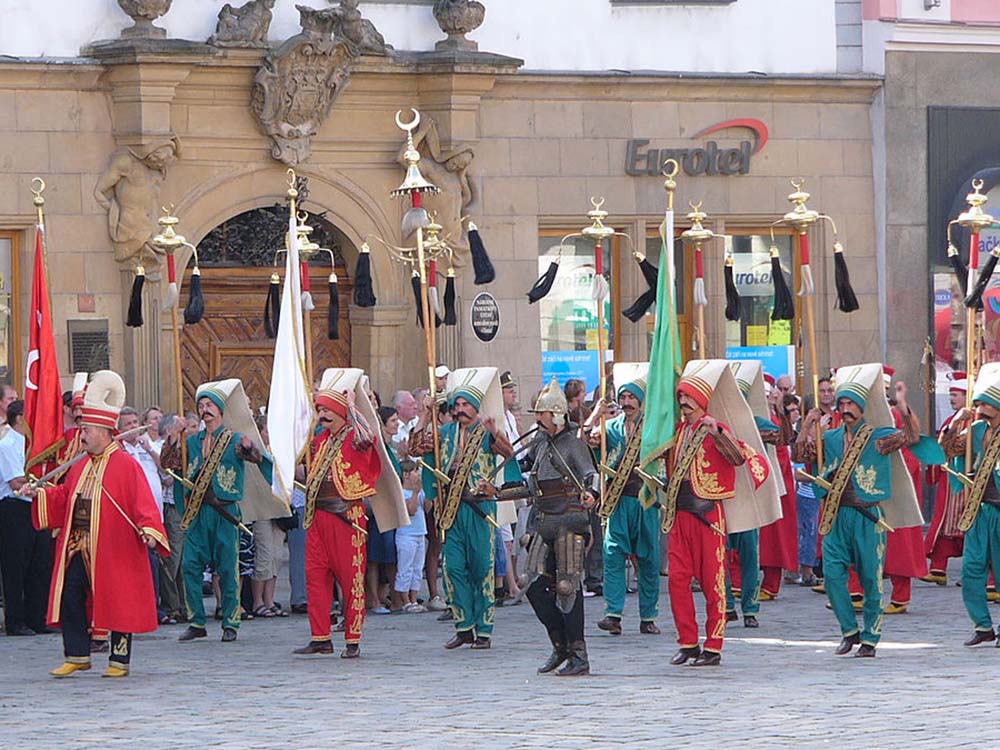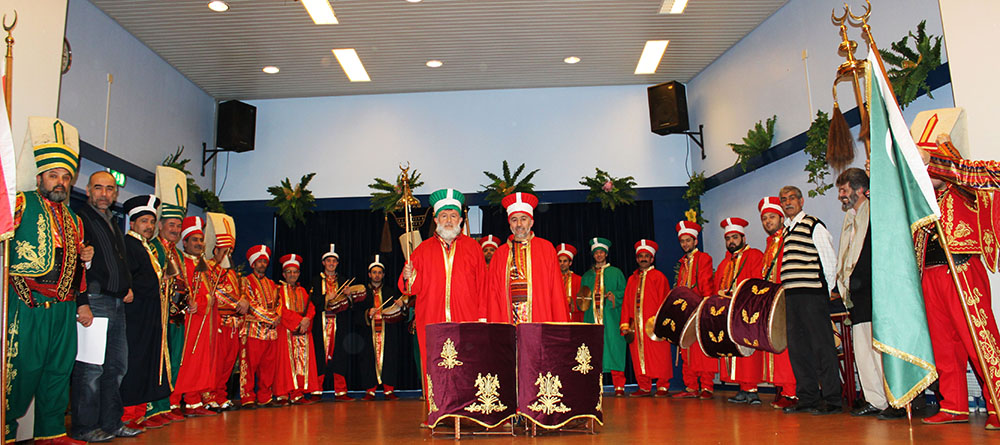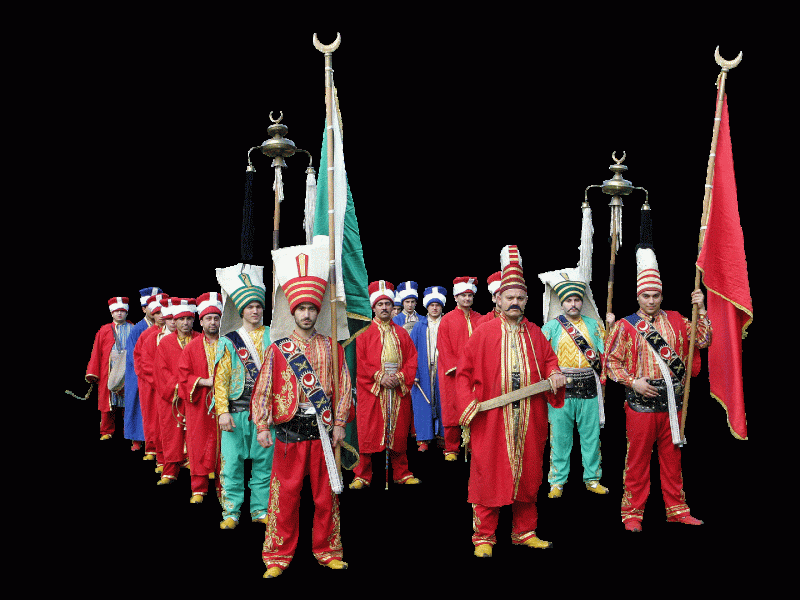Mehterân (in Ottoman Turkish) is the first and only band in the world that ever motivated the army with music. A look at history shows us that the band, which consisted of percussion and woodwind instruments, was called “Tuğ” in the Huns period and later that changed to “Mehter” after Fatih. The band existed to announce the voice to the enemy from a far distance, and to break the morale of the enemy toward the goal of finishing the war in a short time. This role was an indispensable one in the Turkish war history.
Mehter (in modern Turkish), perhaps the oldest military band formed in the world, was first referenced in Orhun Inscriptions. It was believed that the military band, named “Tuğ” and “Kübürge” in these inscriptions, had made music in front of the Hakans. Küvrük (kettledrum), tomruk (drums), çenk (cymbal), and nay-i Türki are instruments from that era. The “Tuğ” played music during war battles and for special occasions. Beyond that, Tug‘s name also became a symbol of dominance for the Turks. All the instruments were built differently and especially for war, for special days, and for sporting games.
According to documentation, Mehter passed through the Ottoman Empire thanks to the Seljuk State. The Seljuk Sultan sent tuğ, flag, and nakkare to Osman Gazi, the Ottoman Emperor, with an edict. This edict had been given to Osman Gazi in mid-afternoon and then the instruments were played afterwards. Thus, the Ottoman Empire’s first band was official. When the Sultan went to war, the Mehters were increased and the band took a stand at the front of the battle.

Mehter is the first and only band in the world that ever motivated the army with music.
Mehters had always played in the battlefields, even in the dark of night, to help keep the army guards awake. And the same time, they yelled “Yektir Allah” (God is the only one). During the war, the Mehterân stood beside the Sultan and the soldiers. They started to play to increase the soldiers’ courage.
he Mehter has its own unique characteristics, the most familiar of which is their unique gait. Band members walk in three steps, move a half motion to the right, then move a half motion to the left. There is also a certain rule in the arrangement of the Mehter team. The commander, called “Çorbacıbaşı” is at the front. The armored guard and green flag are on the left side, and another armored guard and red flag are on the right side. The white flag is displayed in the center. There are also singers, zurna players, a bugler, nakkares, cymbalists, and drummers. Toward the back, the kettledrum player is on horseback.

According to documentation, Mehter passed through the Ottoman Empire thanks to the Seljuk State.
After the 1700s, and as a result of Mehter spreading to Europe, Mehter bands were established as far away as Austria and in other European countries, mainly Poland. The Mehter was deactivated during the period of Mahmut II and then reactivated in 1914 in the military museum. The Mehter’s presence continued at the military museum throughout World War 1, the War of Independence, and during the first years of the Republic. It was discontinued again in 1935.
The Mehter is considered a milestone in the history of military music and the sub-structure of world military bands. Today, the Mehter is under the name of İstanbul Military Museum and Cultural Site. Apart from this, some municipalities have created Mehter teams to keep history alive. It is strongly recommended to visit Military Museum in Harbiye, İstanbul and watch the ceremony.

